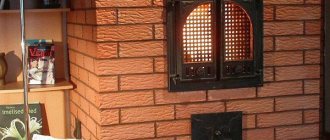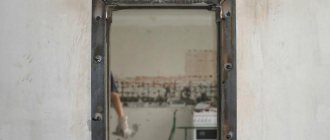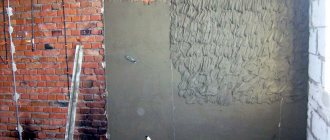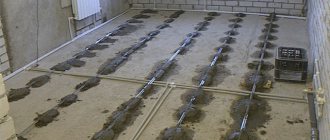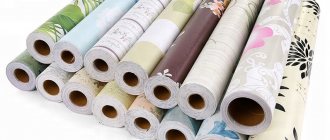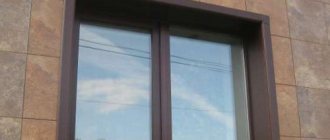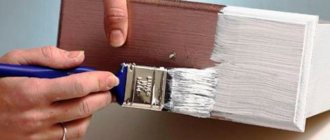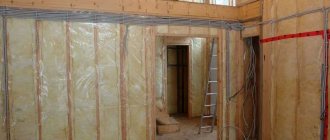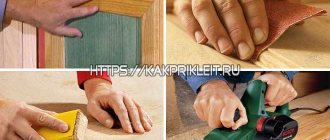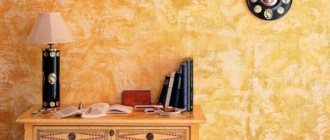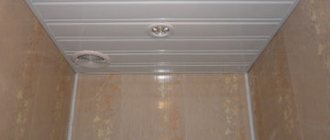The materials used, their pros and cons
The types of materials depend on the place of their application.
Options for wall decoration:
First. Wallpaper. They can have textures, photos, images, be glossy, matte, monotonous, etc.
Their advantages:
- Solid variety.
- Different price range.
- Ease of wall preparation.
- High dynamics and ease of gluing.
Minuses:
- Susceptibility to mechanical stress.
- If any area is damaged after painting, if it is difficult to replace. The reason is the differences in the shades of the editions.
Second . Decorative plaster. It can be used in various designs. Its advantages:
- Serious texture and color range.
- You can make your own image on it.
- Moisture resistant.
- Durability.
Its disadvantages:
- High difficulty of application.
- The price tag is too steep.
Third. Dye. It is also versatile. Strengths:
- Abundance of flowers.
- Can be used in different rooms. Moisture- and oil-resistant versions can be used in the bathroom and kitchen.
- Ease of application.
- Long service life.
- There are versions at any price.
- allowed to create patterns on the wall.
Minuses:
- Reveals all uneven areas on the surface.
- Requires 2-3 layers of coverage.
- Foul smell.
- Long drying process.
Fourth. Tile. Usually it is glued in bathrooms and kitchens. Her strengths:
- Moisture resistant.
- Easy to launder.
- Resistant to light mechanical stress and wear.
- Does not ignite.
- An abundance of color modifications, textures and sizes.
Weaknesses:
- Modest sound and thermal insulation.
- Fragility.
- Complex installation process.
- High price tags.
Fifth . MDF panels. Pros:
- Fast and easy installation.
- Environmental Safety.
- There is no need to prepare walls for them.
- abundance of types and colors.
- Convenient cleaning during use.
- Modest prices.
Minuses:
- They show strong stains and traces of liquid.
- Quite fragile.
- Sensitive to moisture.
- This is a flammable material.
- Unpresentable appearance.
Sixth. Tree. A common option for country houses and baths. Pros:
- Creating a warm atmosphere.
- Hiding uneven areas.
- Ease of installation.
- Abundance of forms.
- Improves noise insulation.
- Nice smell.
- Environmentally friendly.
- It can be painted in different colors and tones.
- With proper processing, rot resistance and durability appear.
Minuses:
- Serious prices.
- The need to update the defense against insects and moisture.
- Doesn't cope well with temperature changes.
In private homes, the interior becomes chic thanks to natural stone. Its advantages:
- Durability.
- Graceful look.
- Strength.
- Environmentally friendly.
- Resistant to moisture and temperature changes.
Minuses:
- Solid prices.
- Massiveness.
- They become clogged with dust. It's difficult to remove.
For those who need modern materials, PVC panels are suitable.
Their advantages:
- Quick installation.
- Lightweight covering.
- Abundance of colors and images.
- Modest prices.
- Ecology.
- Heat and sound insulation.
- Resistance to moisture.
- Durability.
Minuses:
- Flammability.
- Fragility.
- Sunburn.
You might be interested
How much will a good renovation of an apartment cost? Stages of renovation in an apartment Where to start the renovation
Options for working with the ceiling
Tension and plasterboard options usually appear here. Their comparison is outlined in this table:
| Characteristics | Tensioner | Drywall |
| Environmental friendliness | + | + |
| Aesthetics | + | + |
| Safety | + | + |
| Durability | + | — |
| The need for powerful surface preparation | — | — |
| Abundance of designs | + | + |
| High speed and ease of installation | + | + |
| High prices | + | — |
| Potential sags | + | — |
| Difficult to install yourself | + | — |
| Difficulty in removing dirt | + | — |
| Potential web tearing, collapse | + | — |
| Fragility | — | |
| Weakness before low temperatures | + | — |
| Damaged area cannot be replaced | + | — |
| Easy to scratch | + | — |
| When using powerful lamps, spots appear | + | — |
| High prices | + | — |
| Perfect flatness | — | + |
| Various designs can be created | — | + |
| Any cladding fits perfectly on top of this material. | — | + |
| Insulation and cables can be placed behind this material | — | + |
| Not the best durability | + | + |
| Resistance to moisture and fungi | + | — |
| The need to plaster seams and screws | — | + |
You can decorate the ceilings from the inside with wallpaper, paints and whitewash.
Whitewashing is a fairly old decoration method. Its advantages:
- Ease of implementation.
- Cheapness.
- Does not reduce ceiling heights.
- The ability to "breathe".
- Ecology.
- Mold protection
Minuses:
- The need for surface preparation.
- One color option is white.
- cannot be washed.
If you are a supporter of the classics, then a white ceiling is your option. You can use whitewash. Usually its color is selected in lighter colors by analogy with the color of the walls.
Flooring options
All of them must have the following qualities:
- Easy to use.
- High strength.
- Fire resistance.
- Non-slip surface.
- Possibility for additional insulation.
If you need a universal option, then linoleum will do. It is great for any room. Thanks to the abundance of colors and images, it easily matches any interior.
If you need an option with a better look, then it is better to take laminate or wood. They have some analogies.
In rooms with high humidity and floor loads, it is better to use ceramic tiles.
Even today carpet has gained a good reputation. This is an elegant replacement for carpets.
Below is a comparison table of these options.
| Characteristics | Linoleum | Laminate | Tree | Ceram. tile | Carpet |
| Easy and quick installation | + | + | + | — | + |
| Moisture resistance | + | — | + — | + | — |
| Heat and noise insulation | + | + | + | ||
| Strength | + | + | + | ||
| Easy to clean | + | + | + | + | — |
| Plenty of choice | + | + | + | + | + |
| Tendency to deformation | + | — | + | — | — |
| Resistance to chemical elements | — | + | + | + | — |
| Low temperature resistance | — | + | — | ||
| Resistance to temperature changes | — | + | — | + | + |
| Ecology | — | + | + | — | + |
| Affordability | + | + | + | — | + |
| Durability | + | + | + | — | — |
| Noise due to improper installation | — | + | — | — | — |
| Special training required before installation | — | + | + | + | — |
| Counterfeits on sale | — | + | — | + | + |
| Stable stains appear. | — | + | — | — | — |
| Easy to care for | + | + | — | + | + |
| Unpleasant odors | — | — | — | — | + |
For floor finishing, these options are less commonly used: natural stone, cork, rubber, bamboo and self-leveling flooring.
Have questions ? Call!
Wall decoration
When creating a cozy and attractive interior in a room, wall decoration plays a huge role. A large selection of finishing materials allows you to choose the right finish to create a practical and modern interior. Each of the materials used for cladding vertical surfaces has unique properties and has its own specific application and operation.
Preparatory work
Before applying any of the finishing materials to the walls, be sure to perform its preliminary leveling and preparation. The walls are leveled by applying plaster. To do this, the old layers of plaster are completely removed, as well as the surface is primed for better fixation of the fresh layers. Plastering occurs along installed beacons, which allow you to accurately level the wall surface in a vertical plane. After plastering is completed and the last layer has dried, the beacons are removed from the walls, and the resulting cavities are plastered and leveled.
Expert advice: The layer of plaster applied at a time should not exceed 50 mm, as otherwise there is a risk of the mortar slipping and causing unevenness. If leveling requires applying more than 50 mm of plaster, then it is applied in several layers, with each layer applied after the previous one has first dried.
Wall putty is used in cases where it is necessary to obtain not only an even, but also a smooth wall surface. As a rule, it is applied in two layers, after which it is rubbed using a special tool. After the putty layer has dried, the wall is ready for further application of the finishing coat. Modern manufacturers of finishing materials offer a wide selection of different types of finishes. The most popular types include painting, wallpapering, cork covering, tiling and decorative plaster.
Coloring
Using paint as a wall finish is a simple and inexpensive way to create a unique and stylish interior design. Combining different colors and adding original wall patterns allows you to create attractive compositions of a certain theme. Modern paint manufacturers offer a large selection of products presented in a wide range of colors. One of the main advantages of painting walls is the ability to quickly change the interior by choosing a different color palette.
Wallpapering
The simplest and most common way to decorate walls in a room. A large selection of wallpapers with different textures and patterns allows everyone to choose the interior to their liking. The gluing process also does not require any special skill, so it can be easily done without the help of specialists. There are several categories of wallpaper depending on the base material. The main ones include paper, non-woven, vinyl and liquid.
Expert advice: If the goal is to obtain a perfectly flat surface without seams or joints, then you can use liquid wallpaper, which is evenly applied to the prepared surface, and after drying forms a pleasant-to-touch coating that imitates wallpaper.
Ceramic tile cladding
Tiles are a reliable material that allows you to create various design compositions. Due to its unique properties of resistance to humid environments and elevated temperatures, the material is widely used in the finishing of bathrooms and kitchens. Manufacturers offer a wide selection of ceramic tiles with different textures, colors and sizes. The high strength of the material guarantees a long service life of the facing coating.
Decorative plaster
The use of decorative plaster is an original way to decorate the walls of a room. The result is an attractive textured coating with excellent properties. The composition is evenly applied to the prepared walls, after which it is left to dry. Walls coated with decorative plaster are easy to wet clean and also retain an attractive appearance for a long time. Such a surface is not afraid of high temperature and humidity, so the range of its use is not limited.
Stone cladding
Natural or artificial stone can be used for wall cladding. Natural stone is an environmentally friendly material that is naturally endowed with high strength and durability. Surfaces lined with natural stone have a unique texture that creates a pleasant and stylish environment. Artificial stone is practically in no way inferior to natural stone in properties, however, its cost is significantly lower. In many cases, the use of artificial stone is much more rational.
Expert advice: Natural stone is naturally quite cold, so it is recommended to use a heated floor system whenever possible. This will help create a cozy environment and not feel discomfort from cold floors.
Decorative panels
Recently, various decorative panels have become increasingly popular. They can be made from a variety of materials, including wood, plastic, glass and drywall. The main advantages of this finishing method are the speed of installation and the absence of the need for leveling. Such panels are distinguished by high performance characteristics and a large selection of surface patterns.
Frequent mistakes when performing finishing work
Errors made during OR can negatively affect their quality and service life:
- A design project has not been created that reflects the visual result. It helps to understand in advance what the interior will look like upon completion of the work. This will allow you to correctly calculate the required volumes of materials and resolve the issue of types and volumes and the required work.
- The positions of plumbing and electrical equipment have not been determined. Even at the beginning of the repair, you need to solve this dilemma in order to:
A) Determine how and where sockets and switches will be located.
B) Develop a method for laying cables, pipes, ventilation, etc.
C) Calculate the load of the installation structure.
D) Calculate the insulation load.
For example, if you randomly plan the positions of lighting devices without dividing them into groups, in some areas of the premises you will end up with very weak or very strong lighting.
- There are no reinforced structures, reinforcement or insulation in the right places. Example: if the partitions are plasterboard, then in areas where massive furniture and other similar elements are installed, a reinforced profile must be installed.
- The condition of all major surfaces in the room has not been studied for defects. The same applies to communications. Example: if you do not change the wiring in an old house, it may not be able to cope with the load from powerful household appliances. Eventually the circuit breakers will fail.
- There is no study of sources of heat loss. Example: without insulating walls in apartments where this is necessary, they can freeze and become damp. Mold and fungi form on them.
- The repairs are partially being carried out. If it is not carried out uniformly in the whole apartment, but only in rooms, level differences in the ceilings in the rooms may arise. This will make it more difficult to establish communications, and the created coatings will be damaged.
If the available funds are not enough for a complete renovation, it is better to save up and arrange full-fledged work.
- Use of cheap materials and compositions. As a rule, such materials are not durable. They won't last long. And soon we will have to do repairs again. Example - if you lay metal-plastic pipes with cheap fittings, there is a high risk of leaks.
- There is no control over repair work. Control is necessary when hiring workers. For example, they may deviate from the design project, install sockets or pipes in the wrong areas, etc. Therefore, it is important to monitor the quality of work at all stages.
- Repair of poor quality. This point follows from paragraph 8. Some teams charge small amounts for their services. Most often, the reason for this is the low professional level of employees. Such teams can make repairs for a very long time and with poor quality. The end result is a waste of money.
Ceiling finishing
There are several ways to finish the ceiling, each of which has its own pros and cons. When choosing a particular finishing material, you should take into account the microclimate of the room, the requirements for the coating and the style of the interior being formed in the room. The most popular methods of finishing the ceiling include whitewashing, painting, wallpapering, as well as installing suspended and tensioned structures. To make it easier to choose one of the finishing methods, you need to study the features of each of them.
Whitewash
The traditional method of finishing the ceiling, which is becoming less and less popular for a number of objective reasons. The whitewashing process involves applying a special solution of chalk or lime to the ceiling, which, after drying, forms a perfectly white surface. Such ceilings are in perfect harmony with any finishing materials, which allows them to be used in any interior.
The technological process of applying whitewash is quite simple, however, difficulties can be caused by the complex of required preparatory work, which includes leveling, plastering and puttying the ceiling. It is worth noting that the service life of whitewashed ceilings is not very long, since over time the surface loses its original whiteness and does not look attractive enough. To maintain the properties, periodic updating of the whitewash layer is required. The disadvantage is also the poor resistance of the material to a humid environment.
Painting the ceiling
This method is also simple and low cost, but it requires a number of operations to prepare the surface for applying a layer of paint. After the paint dries, the result is a practical surface that retains its attractiveness for a long time. A large selection of colors allows you to create a stylish and harmonious atmosphere in the room. The quality of finishing work should be given special attention, since the durability of the coating largely depends on it.
Expert advice: In order to paint the ceiling without streaks, it is necessary to apply several layers of paint, starting from the walls and moving towards the center of the room. Each subsequent layer is applied perpendicular to the previous one.
Pasting
You can quickly and inexpensively update the ceiling surface by gluing it with special tiles or wallpaper. The tiles are made from lightweight polystyrene foam and can have various decorative patterns on their surface. Gluing the tiles does not cause any particular difficulties, and the autonomy of each of the elements allows, if necessary, to easily replace individual sections. To implement this finishing method, no additional preparatory work is required; the tiles can be attached to any surface.
Wallpaper can also be used as a ceiling decoration. It is recommended to choose special non-woven wallpaper, which is easy to maintain and durable. The technological process of wallpapering a ceiling is no different from a similar process for walls. The only difference is the increased complexity of pasting the ceiling, since under the influence of gravity, freshly glued wallpaper always tends to come off.
Installation of suspended ceiling
One of the most popular methods of finishing the ceiling, which allows you to hide all sorts of defects and surface irregularities. The technology allows you to create multi-level structures that can be used to divide space into functional zones. Built-in spot lighting will create a pleasant and cozy atmosphere. The basis of the structure is a strong and lightweight frame, which is covered with plasterboard. The plasterboard sheets used can have different textures and colors. With proper use, suspended ceilings will last quite a long time, while maintaining their original appearance.
Installation of stretch ceiling
A stretch ceiling is an excellent way to quickly and efficiently finish a ceiling. Such ceilings are made from special polymers that stretch when heated and contract when cooled, forming a perfectly flat and smooth surface. This is the technology for installing suspended ceilings. The polymer material used has high strength and durability. The use of photo printing allows you to create unique interiors with realistic patterns on the ceiling.
Expert advice: Since the polymer film used for stretch ceilings is highly susceptible to temperature changes, installation of such structures is undesirable in seasonal rooms without a heating system, since the film will begin to crack when the temperature drops.
An unobvious advantage of suspended ceilings is their water resistance, which allows you to protect the premises from a possible flood. If a pipe breaks in the neighbors above, the polymer sheet will take the full blow, and its strength allows it to withstand impressive volumes of water. After this, all the water can be drained through a small hole in the ceiling, and the canvas can be restored to its original form using a heat gun.
Carrying out any finishing work, be it screeding a floor or painting walls, requires strict adherence to the technological process and constant quality control. With a responsible approach to the renovation of premises, the result will be an attractive interior that will delight the owners for a long time and surprise the guests of the house.
Factors influencing the cost of repairs
Repair is a global event. It requires certain costs. But what factors make up its cost? Their list is as follows:
- Professional level of employees. The higher it is, the higher the dynamics and speed of repairs.
- The responsibilities that experts can assume and the guarantees they provide.
- Hiring a team or agreement with a company. In the second case, the payment is always higher, but there are more guarantees for high quality repairs, and all activities are reflected in the documentation.
- The amount of work carried out by a team or company.
- Number of decorative components. For example, due to the use of 3D panels and ceiling lights, the cost of work also increases. These nuances must be provided for in advance. The simpler the repair is, the easier it is to agree on an estimate.
- Dynamics of work implementation. Here workers can work in two shifts. Accordingly, the payment will be higher.
- Hiring a foreman. It is needed if for some reason you cannot control the execution of the work yourself. And if you can, and even purchase the materials yourself, then you get savings. But the time investment is enormous.
Have questions ? Call!
Painting works
Painting work includes a whole range of interior finishing works.
Thus, painting work involves installing paint corners, priming walls, filling and sanding them, sealing seams between sheets of drywall, as well as painting walls, gluing wallpaper (more about choosing wallpaper, what kind of wallpaper there are). As for ceilings, painting work begins with priming the surface, installing a painting corner and sealing the seams between sheets of drywall. Then they move on to gluing the fiberglass and priming it, puttying and sanding the ceiling, which can be done in two stages. All painting work on the ceiling is completed by painting it.
Rough and fine finishing
Construction of a house or its major renovation includes rough and fine finishing. Rough finishing includes work on leveling the surfaces of ceilings, walls, and floors; installation, if necessary, of a “warm floor” system; installation of heating, water supply and sewerage systems; laying electrical wiring; installation of window and door units, all types of glazing.
Finishing (finishing) finishing is carried out after rough finishing. This includes the following types of work:
- Installation of plumbing.
- Laying ceramic tiles.
- Final finishing of ceilings and walls - finishing plaster and putty, painting, wallpapering, finishing with decorative panels and artificial stone and other design work.
- Installation of finishing floor covering.
- Installation of sockets, switches, installation of hanging furniture and other actions to decorate a house or apartment.
Finishing completes the construction or renovation of a house; after its completion, the housing is ready for occupancy and permanent residence.
